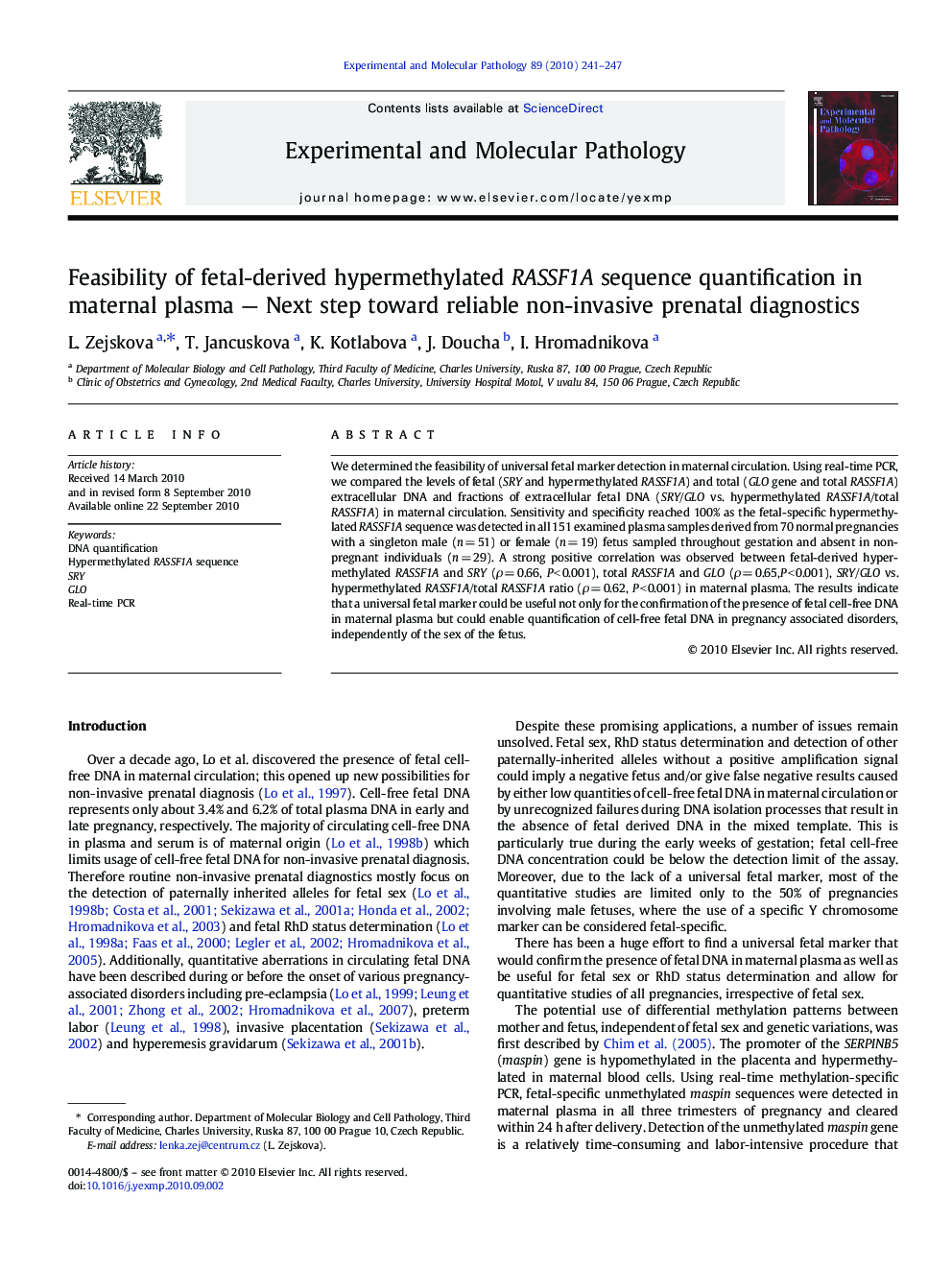| Article ID | Journal | Published Year | Pages | File Type |
|---|---|---|---|---|
| 2775483 | Experimental and Molecular Pathology | 2010 | 7 Pages |
We determined the feasibility of universal fetal marker detection in maternal circulation. Using real-time PCR, we compared the levels of fetal (SRY and hypermethylated RASSF1A) and total (GLO gene and total RASSF1A) extracellular DNA and fractions of extracellular fetal DNA (SRY/GLO vs. hypermethylated RASSF1A/total RASSF1A) in maternal circulation. Sensitivity and specificity reached 100% as the fetal-specific hypermethylated RASSF1A sequence was detected in all 151 examined plasma samples derived from 70 normal pregnancies with a singleton male (n = 51) or female (n = 19) fetus sampled throughout gestation and absent in non-pregnant individuals (n = 29). A strong positive correlation was observed between fetal-derived hypermethylated RASSF1A and SRY (ρ = 0.66, P < 0.001), total RASSF1A and GLO (ρ = 0.65,P < 0.001), SRY/GLO vs. hypermethylated RASSF1A/total RASSF1A ratio (ρ = 0.62, P < 0.001) in maternal plasma. The results indicate that a universal fetal marker could be useful not only for the confirmation of the presence of fetal cell-free DNA in maternal plasma but could enable quantification of cell-free fetal DNA in pregnancy associated disorders, independently of the sex of the fetus.
Research Highlights► Hypermethylated RASSF1A is fetal-specific. ► Universal fetal marker is detectable from the 12th week of gestation. ► Concentration of hypermethylated RASSF1A positively correlates with SRY levels. ► Hypermethylated RASSF1A enables sex-independent quantification of fetal cell-free DNA.
